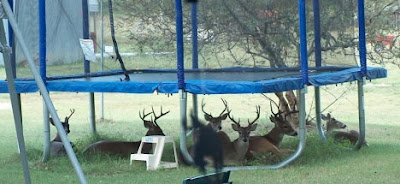A meditation on plants, picking up on some earlier threads of vegetated abstractions, whether they be sculptural or metaphorical, aesthetic or functional. First is the idea of global warming, and it’s impacts on the biological functioning of plants. While often reported as a purely negative or neutral, the shifts of hardiness zone allows for greater biodiversity, but changes the natural makeup of the ecology of regions.
There are potentially some aspects of this that are beneficial, such as the extended growing season, which allows for greater plant functions, such as the uptake of carbon, as well as more vigorous growth (i.e. faster production). While the long-term results are inconclusive, this may be a subtle way of nature trying to balance out some of the man-made global temperature increase and carbon spikes by using it’s available means – similar to James Lovelock’s idea of the Gaia Hypothesis, in which the earth is a self-regulating organism.

:: image via Treehugger
The origins of trees – both physical and metaphor take on complexity when couple with chaos theory and fractal geometry, investigating the innate form and structure. Similar to biomimicry, and riffing on threads of golden section, drawing trees requires both artistic process as well as a scientific way of looking to parse the specific formal properties. ‘Branching‘, an interesting study on drawing trees, provides a play-by-play of a significant artwork.

:: image via sevensixfive
While trees are but a part of the overall strategies for landscape and urbanism, there are some specific functional aspects that are vital components of design and planning strategies. Two examples show a range of functions of urban vegetation. The first is more holistic, in terms of loss of habitat, is summed up in a reference on Treehugger to the significance of habitat loss, referencing Wikipedia:
“Habitat destruction is a process of land use change in which one habitat-type is removed and replaced with another habitat-type. In the process of land-use change, plants and animals which previously used the site are displaced or destroyed, reducing biodiversity. Urban Sprawl is one cause of habitat destruction. Other important causes of habitat destruction include mining, trawling, and agriculture. Habitat destruction is currently ranked as the most important cause of species extinction worldwide.” [emphasis from Treehugger]

:: image via Treehugger
We talk often of urban ecology and providing habitat for particular species of plants and animals that are mutually beneficial to urban dwellers. This often comes at the cost of providing available habitat for more vigorous adapted species that we consider nuiscances. This balance will only shift more as habitat destruction and displacement occurs throughout the world, creating pressure on particularly mobile species to find refuge in our urban zones.
The second aspect involves some more specific potential strategies for mitigation of global warming, by planting and adapting plants for particular qualities that provide higher levels of surface reflectivity, or albedo. Mentioned on various sources, including BLDGBLOG‘s reference to a recent Guardian article on the subject involves plantings with silver, while, or lighter pigments for increased reflection of suns rays. Studies have shown that switching from darker and more uniformly surfaced plantings to ones with higher surface area (i.e. hairy leaves) and lighter colors can reduce temperatures significantly.

:: image via BLDGBLOG
How these seemingly disparate threads converge in a strategy? A previous post tied together aspects of current plant bioengineering techniques, touching on the good and bad components of these endeavors. As with many science, design, and planning strategies, we tend to look at the individual issues in isolation rather than as an aggregation of potential benefits. Unlike monocultural agriculture, the idea of plant life is one not of isolating and maximizing productivity – but rather it using more of a biodynamic perspective to investigate plants innate synergies with each other, and by default with us. And to not look at plants solely as a solution, but to other possibilities as well. While plants provide multiple functions, other man-made elements are more simplistic, and have possibilities, as BLDGBLOG notes, for some simpler solutions, including “…an architectural side to all this: “Other scientists have suggested different ways to cool the planet [such as] painting roads, roofs and car parks white.” Recent trends in cool roofing and green building are steps in this direction.
In this regard we can tie together the following threads into something resembling coherence. First, we look at the responses of nature to man-made situations such as global warming as potential strategies to emulate in coming up with solutions. Second, we take a closer look at nature’s patterns and processes at a more specific level – knowing plants, and their characteristics and synergies in new ways, not just as commodities or products of aesthetic appreciation. Third, we balance solutions not as a single goal, but a collective benefit – to humans, to habitat and it’s related flora and fauna, and to providing overall solutions, taken FROM nature’s processes. Finally, we don’t look to science to remake similar mistakes (such as getting rid of conifers, genetically modifying plants for single uses, such as biofuels, and planting monocultures of broad-leaf and high-albedo species) but to find a balance.
Coming full circle, we look at the big picture, examine the components in detail, identify problems and solutions, and provide balanced approaches that are locally and globally beneficial. Kind of like nature does already.